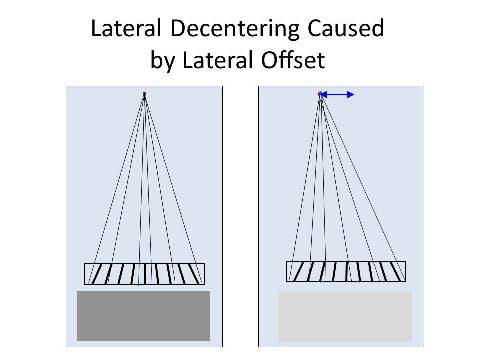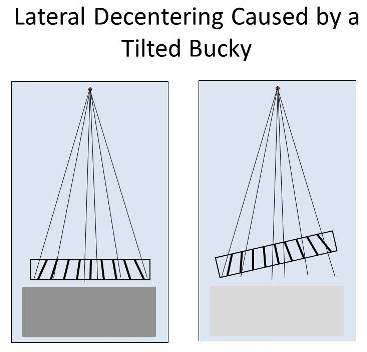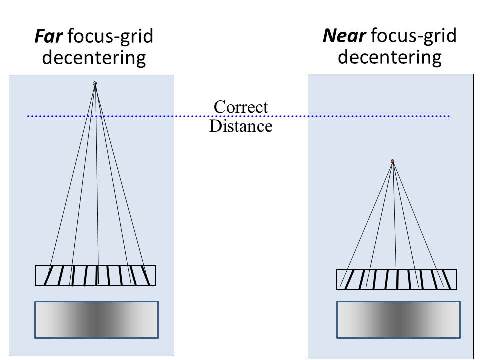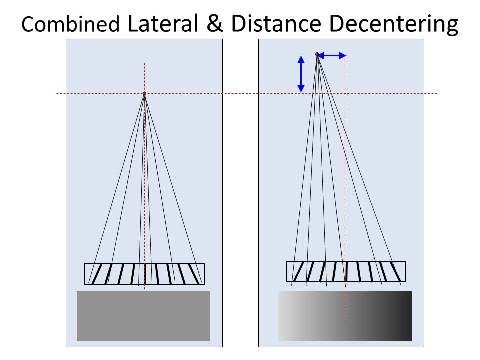If the lateral center of the grid is not aligned with the central x-ray beam, there will be a uniform reduction in the intensity of radiation reaching the receptor. This effect can occur either because of lateral misalignment or due to tilting of the grid with respect to the central beam.
Because there is a uniform reduction in beam intensity, there is no identifying image abnormality to alert the interpreting physician. And because beam intensity to the receptor is reduced, its effect must be offset by a compensatory increase in technique and thus patient dose.



